Last Chance to Catch NYC's Holiday Notalgia Train
We met the voices of the NYC subway on our nostalgia ride this weekend!


Marion Duckworth Smith at the front door, painted red, which symbolized welcoming to the Dutch
The Lent-Riker-Smith Homestead, the only remaining Riker house, as depicted in an 1877 painting in the collection of the Museum of the City of New York
Behind a white picket fence between the entry to Riker’s Island and a Tudor garden apartment community in Queens lies the oldest private residence in New York City. The Lent-Riker-Smith homestead, built around 1655, is an enchanting place. It is the oldest private residence in New York City and has been almost continuously occupied since its completion. Its restoration and current incarnation is due to decades of hard work by current occupant Marion Duckworth Smith.
The homestead was built by Abraham Riker in 1655 on land Riker received from Governor Peter Stuyvesant. The 1665 farmhouse forms the core of today’s Lent-Riker-Smith homestead. The house originally consisted of a two room Dutch farmhouse. A loft was added onto the house, followed by a multi-story expansion in 1729, which included higher ceilings and concealed beams.
The house’s current chapter began in 1966, when a Michael Smith moved into the house as a tenant. By this time, the last Riker descendant in the line which owned the house had died. The estate sold the house to a William Gooth, an accountant and personal secretary for the Rikers, who rented it to tenants including Jack Russel (a regular on Sid Caesar’s Show of Shows) and Michael Smith. In 1975, the Gooth estate decided to transport the house to another location. Upon discovering that such a relocation was illegal, they put the house up for sale. Michael took advantage of his right of first refusal and purchased the house and property in the summer of 1975. Michael became the third owner of the property since 1655. The Rikers (whose family included the Lents and Rapelyes) and William Gooth were the property’s only other owners. Michael lived there for only a few years before moving into an apartment in Manhattan. The house became Michael’s warehouse and was known as the neighborhood’s haunted house. The house’s future remained uncertain and it was in desperate need of a savior.
Michael invited Marion to see his cemetery on their second date. Marion doubted that anyone had his own cemetery and told Michael as much. He responded “well, I do,” and off they went. On a cold, dreary November evening in 1979, Marion arrived at the Riker homestead. She stood in the hallway, covered in goose bumps, still in disbelief that she was standing there. Michael went to retrieve some candles, since the electricity had been shut off to the house and led Marion out to the cemetery. She stood there shivering, amidst the broken and toppled headstones convinced that the house had been waiting for her. It had been a childhood dream of Marion’s to bring such a house back to life.
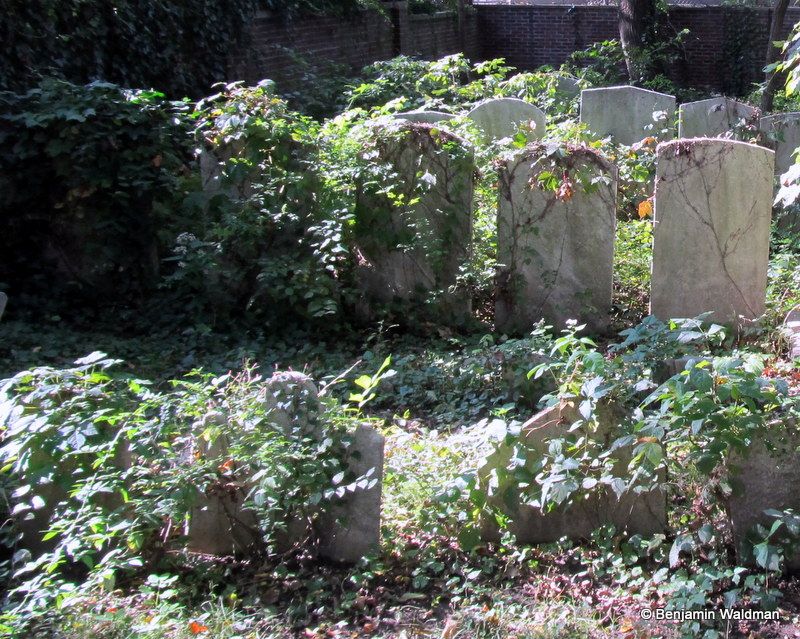
After their wedding, Michael asked Marion is she wanted to live in his Manhattan apartment or his old house. Without missing a beat, Marion told Michael that she wanted to live in the old house. While the house had been empty, it had been burglarized and vandalized. The damage had to be cleaned up and the items which Michael had stored in the house had to be removed in order to transform the house into a home. Marion was not daunted. She just rolled up her sleeves and got to work. It took Marion six months to clean up the house enough to move back in.
The first project which Marion tackled was the attic. Marion discovered ledgers, wills, financial directories, diaries, photographs, and other documents which provided a lens into daily life of the Riker family. Marion felt as if she had discovered a time machine in her attic. By reading the daily correspondence and other documents, she was able to follow the lives of the Riker family members as they grew older. The majority of the papers were donated to the Long Island Historical Society (now the Brooklyn Historical Society), but Marion kept what she called “the good stuff.” Her prized documents include animal feed bills, canceled checks, and a last will and testament which left the family’s bed, its most prized possession, to the eldest son.
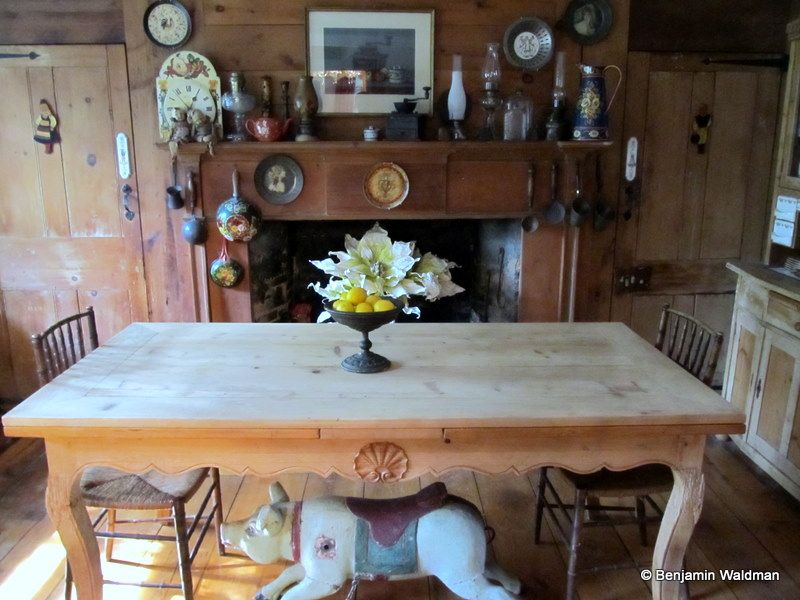 The dining room, used as a tavern by soldiers during the Revolutionary War, is decorated with pastel paintings by Marion’s mother
The dining room, used as a tavern by soldiers during the Revolutionary War, is decorated with pastel paintings by Marion’s mother
Marion tackled one room at a time. In each, she was amazed at what she discovered as she began pulling back the layers of history. Under the 1960s gold wall-to-wall carpeting in the living room, and the tile in the library, Marion discovered the original wide-plank pine floors. The floors, which at some point in the house’s history had been painted black, were restored to their natural color.
A fire in the 1950s damaged the interior of the house to the house. The fire charred the doors and ceiling beams and the kitchen, dining room, and hallway floors were replaced with haphazardly arranged narrow oak boards. Marion was able to secure wide planked pine beams from a barn that was being demolished upstate to restore the living room, dining room, and hallway floors to their original beauty. At first, Marion wanted to erase every remnant of the fire, but decided that the charred wood stood as a testament to another chapter in the house’s history.
The house is a treasure trove of artifacts, carefully arranged by Marion over the years. Each object has a story to tell, which Marion is more than happy to share. The mudroom contains an impressive collection of chalkware (chalkware figurines were given out as carnival prizes during the first half of the twentieth-century). Snow White figures prominently among the collection because it was the first film Marion saw as a 5-year old child.
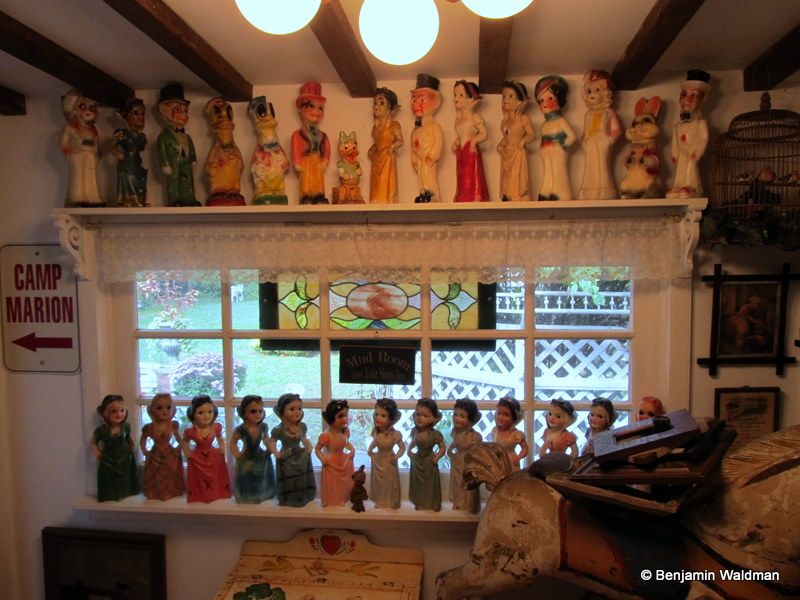
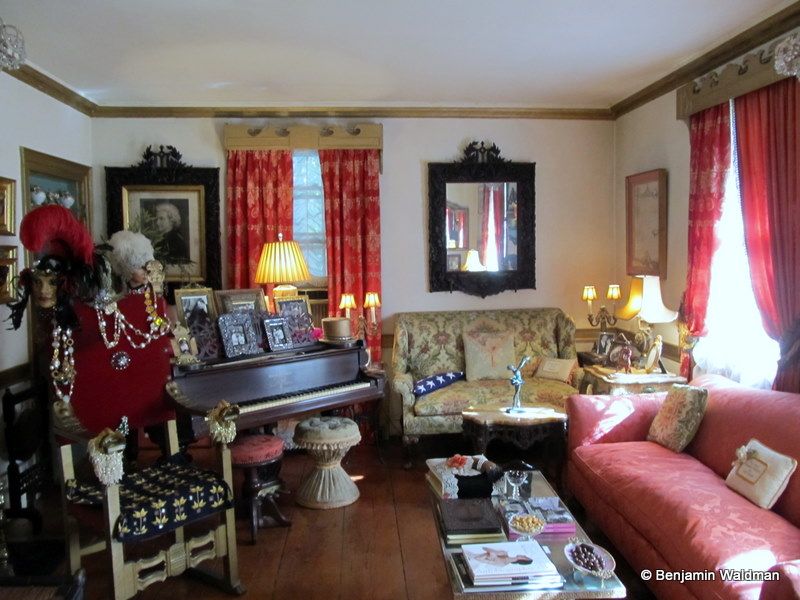
The living room contains an 1888 Steinway Grand piano, intricate wooden frames carved by Michael’s great-grandfather, a flag flown over the United States Capitol, a photograph of Marion in the Will Roger’s Follies, and chandeliers from the townhouse of New York City Ballet co-founder, Lincoln Kirstein. Items belonging to George Balanchine abound as well.
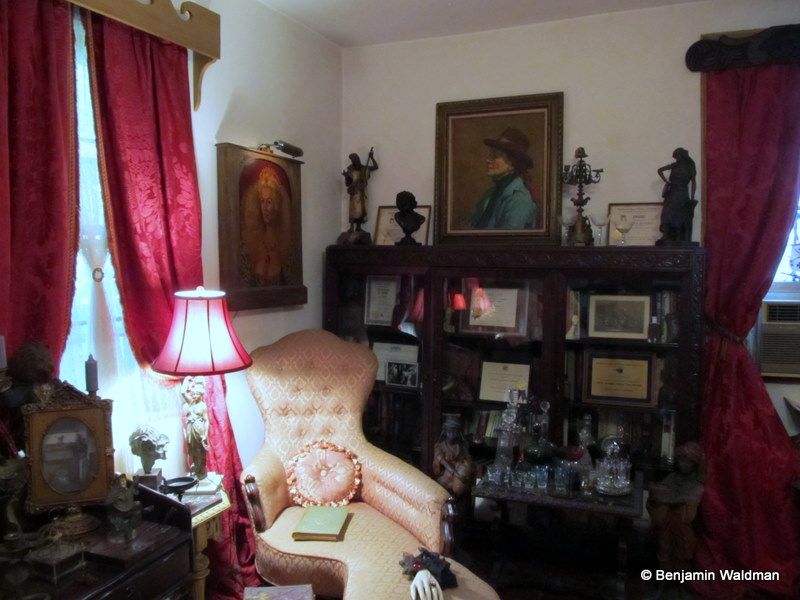
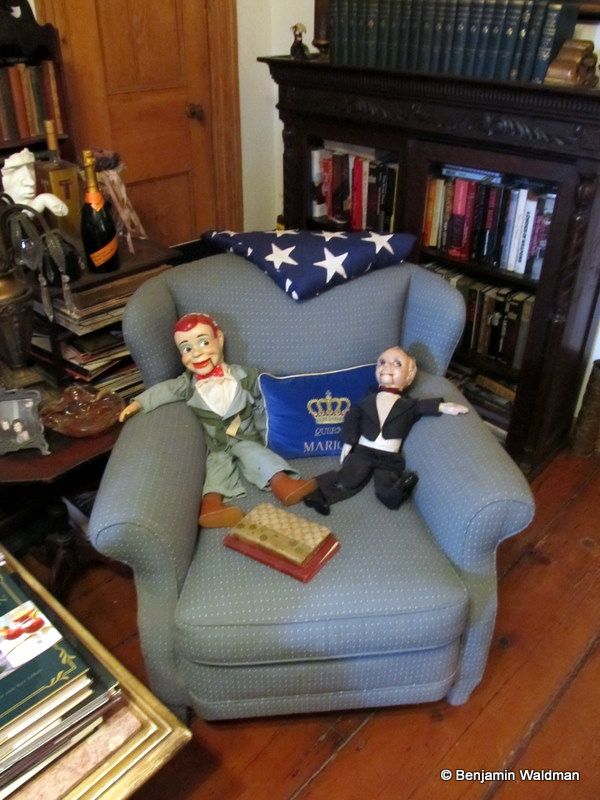 Marion’s collection of ventriloquist dummies has claimed the best seats in the library
Marion’s collection of ventriloquist dummies has claimed the best seats in the library
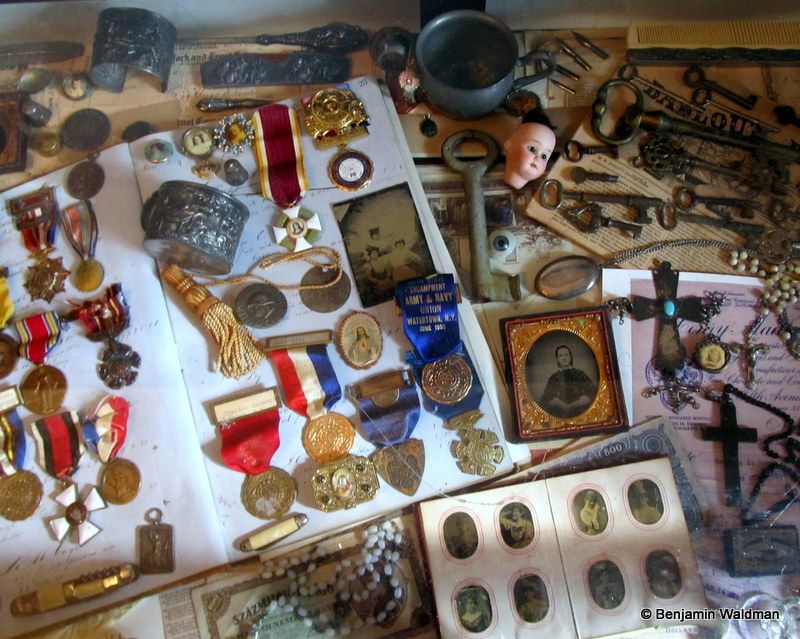
A glass cabinet serves as a memory keeper for Marion. The artwork belonged to her mother and the war and organization medals to her father
The exterior of the house and the one acre property on which the house is situated are just as impressive as the house’s interior. The Riker Family Cemetery contains 132 marked graves belonging to the Riker and Lent Families. Some of the earlier gravestones are particularly poetic. Marion’s favorite contains the inscription “Weep not my friends all dear, I am not dead but sleeping here. The debt is paid, my grave you see, Prepare for death and follow me. My flesh shall slumber in the ground Till the last trumpet’s solemn sound; Then burst the bands in sweet surprise, And in my savior’s image rise.”
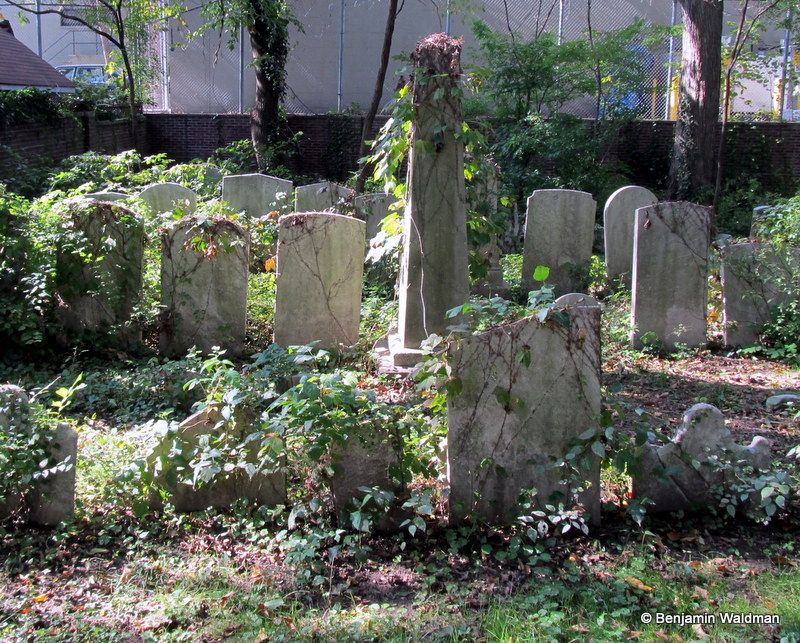
A cenotaph belonging to Abraham Riker is one of the most important monuments in the cemetery. As it states on the stone, Captain Riker “Served his country nobly in the war of the Revolution and died at Valley Forge May 7, 1778, in his 38th year.”
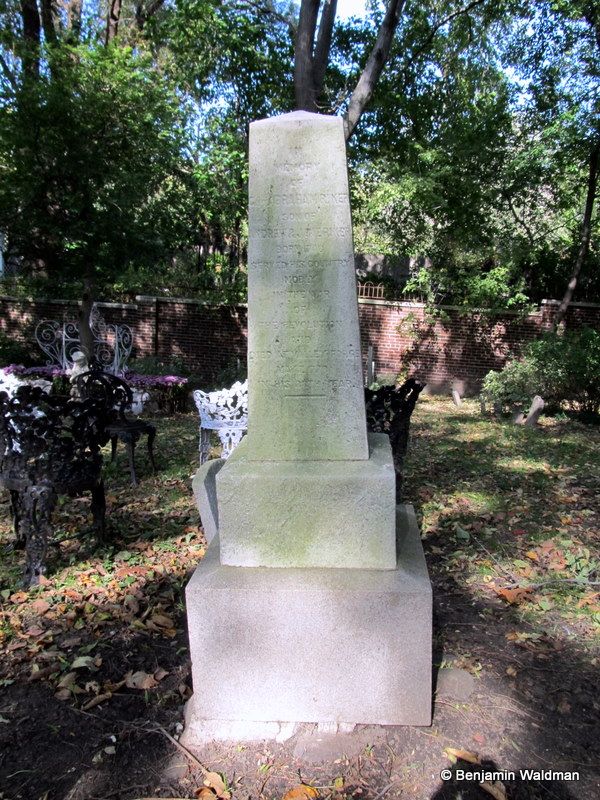
Some non-Rikers have had the honor of being buried in the cemetery as well including Rudolph Durheim, a Swiss pensioner who served as caretaker of the Riker house in the 1930s and 40s, Marion’s mother Rozsika, and Michael Smith.
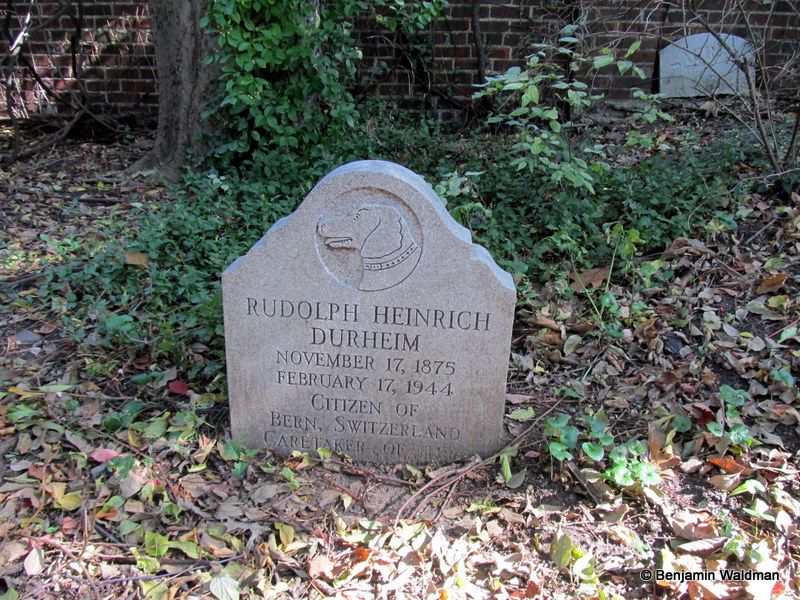
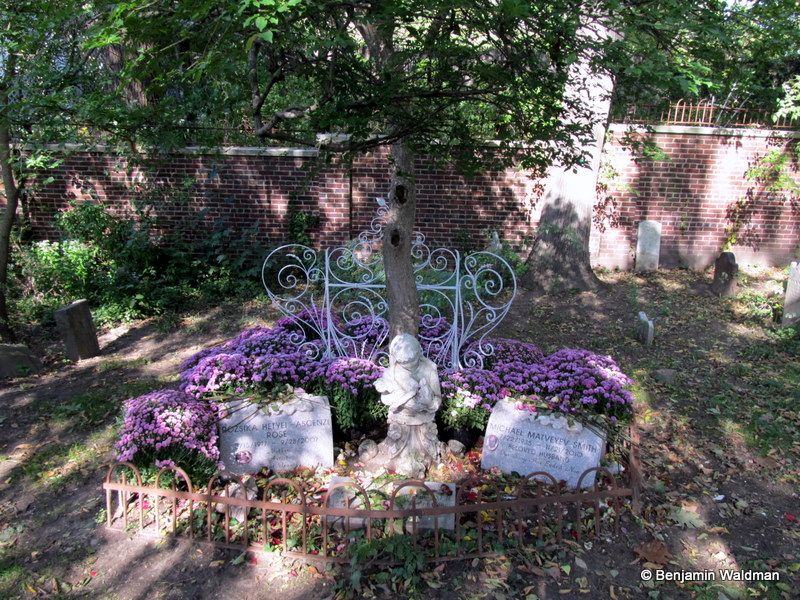
When Marion moved into the house, the gate that graces the cemetery was missing the letter K from the Riker family name. Replacing the K was on Marion’s to do list, but it was not a priority because she was unsure how to replicate it. Shortly after an article about the house appeared in the New York Times, Marion received a mysterious package in the mail. Marion opened up the package and discovered the missing K from the cemetery gate and a short note. A Riker family member had discovered the K lying in a pile of leaves when the house had been abandoned and decided to take it since he thought the house would was going to be demolished. Upon seeing the story in the Times, and realizing that the house was being restored, the Riker immediately mailed the letter to Marion so that she could repatriate the letter.
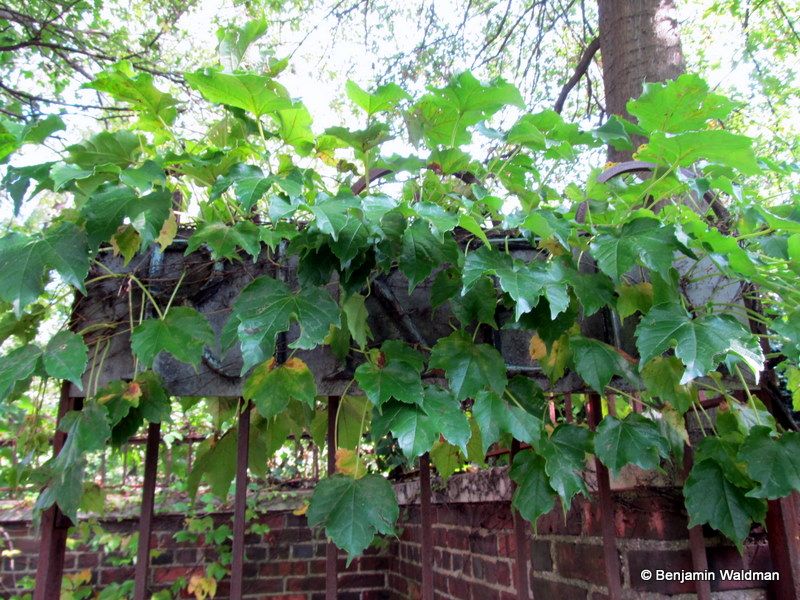
The gate leading into the cemetery
Marion spent years designing her Romantic Garden. She and Michael had weekly Friday night dates to Tepper Gallery where they would pick out new items to add to the garden, including a balustrade, fountain, and urns from the Steinway Mansion. Marion wrote a book about her transformation of the garden called The Romantic Garden which provides tips for the burgeoning gardener, and is accompanied by photographs taken by Marion.
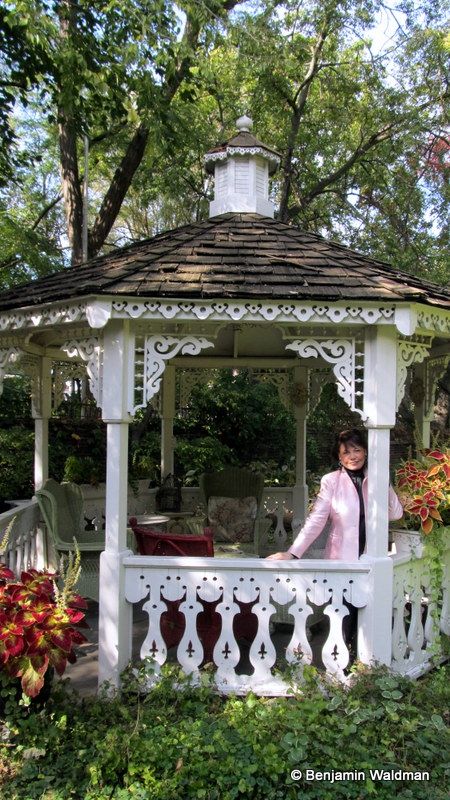 The gazebo, constructed in 1993 in honor of Marion and Michael’s 10th wedding anniversary, is designed using spokes Marion discovered in her attic
The gazebo, constructed in 1993 in honor of Marion and Michael’s 10th wedding anniversary, is designed using spokes Marion discovered in her attic
Together with her handyman, Mike Cavaliere, Marion added a number of follies to the property. She would call her handyman and ask him “can you come out and play?” and together they would work their magic. They created a gazebo, a gingerbread house, and a secret garden. These objects also demonstrate Marion’s philosophy that historical restoration and whimsy can be bedfellows.
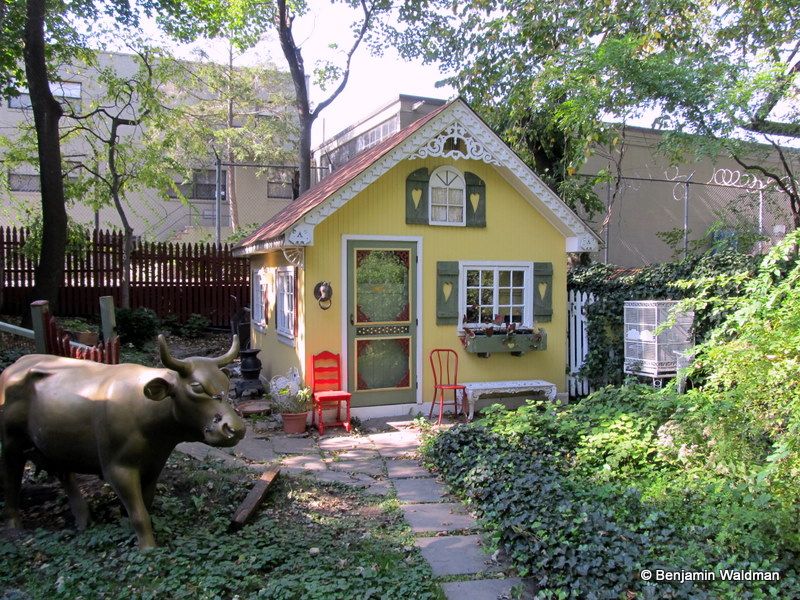
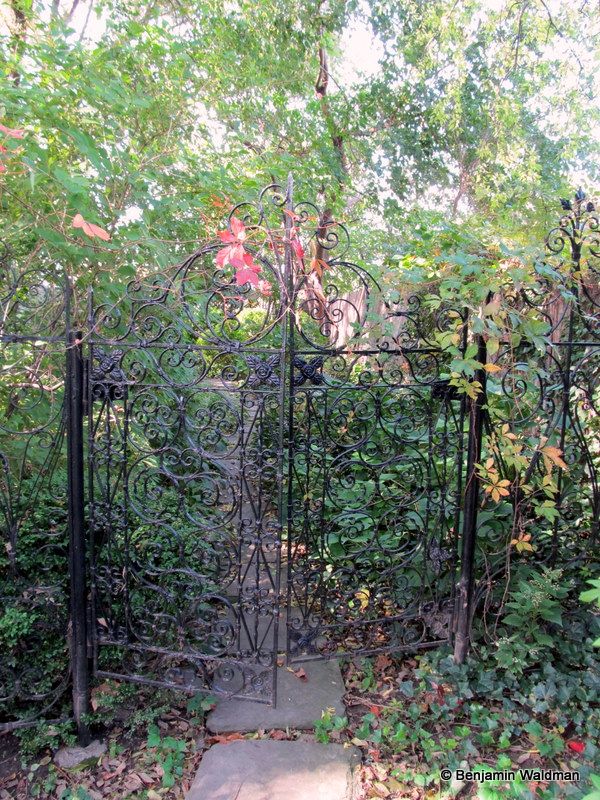
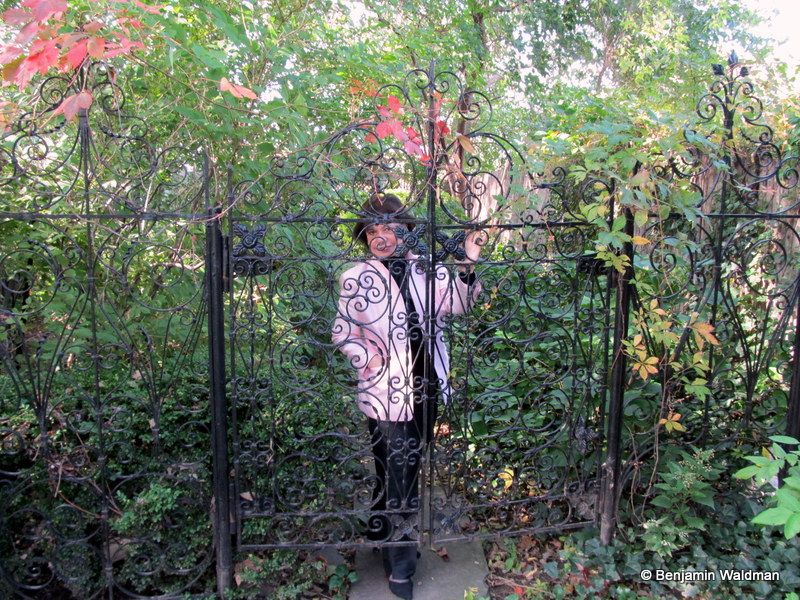
When discussing the restoration, Marion is extremely modest concerning her role. She spent over 25 years restoring the house and making it her home. She had numerous assistants on the project including neighbors and professional handymen, and the Old House Journal (the bible for restoring old homes). However, had it not been for Marion none of this restoration would have occurred. Michael passed away last November, and was recently buried in his cemetery. Marion lost a partner, but luckily the house keeps her busy.
As the years pass, Marion’s goal is to find an organization or person willing to preserve her hard work. She would like to remain in her house for the rest of her life, and then would like the house and grounds to be permanently opened to the public. For such an important piece of New York City, and American History, this has been an extremely difficult and painful task. The New York City Parks Department and The National Park Service both looked like promising leads at one point. Regrettably, neither panned out.
Marion is a jack of all trades. She is an author, photographer, greeting card designer, gardener, model, actress, and most importantly a restorer. Her many talents and interests enabled her to successfully restore the Lent-Riker-Smith Homestead and transform it into her own home. She sums up her life by saying; “I’ve lived my fairytale, now I just have to maintain it.”
Mary Duckworth Smith
https://www.rikerhome.com/
info@rikerhome.com
718-721-0494
Subscribe to our newsletter